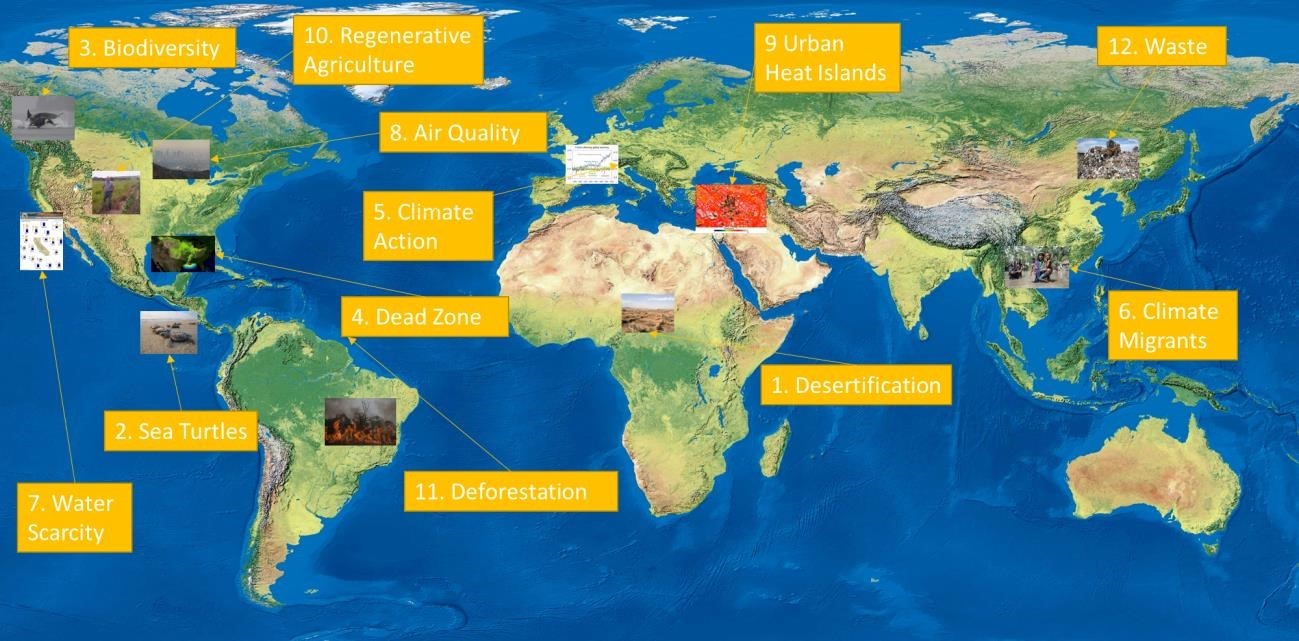
Environmental Problem Solving in an Age of Climate Change:
Volume 1 – Basic Tools and Techniques live in text links
Welcome to your online access to view and explore the live links in the text Environmental Problem Solving in an Age of Climate Change: Volume 1 – Basic Tools and Techniques.
Each chapter page includes the full text with live links to content in the print version of the textbook.
You should be able to navigate to your desired chapter and find the section, and duplicated text for the links you can use to learn more about each subject.
Tackling Environmental Challenges
Addressing complex environmental issues requires a working knowledge of both basic and applied science, including disciplinary frameworks for understanding complex, interconnected systems and decision support to help identify the “best” approach to solve the issue. Truly sustainable solutions must also incorporate social and economic concerns like environmental justice, social equity, and economic viability. Add to this the ongoing impacts of climate change and uncertainty around climate projections, and it becomes clear that tackling environmental challenges usually requires a team of environmental professionals trained and practiced at tackling complex problems.
In this text, you’re able to practice solving complex environmental problems with a selection of twelve current environmental issues. From desertification in sub-Saharan Africa to dead zones in the Gulf of Mexico, what may seem like localized environmental issues actually result from a variety of human activities connected to global-scale processes like climate change. ††

In addition to helping you apply your basic understanding of ecological processes, mapping the complexity of the larger socio-ecological system, and researching and comparing solutions, this text is designed to help you see how environmental professionals apply their scientific knowledge in a team setting to tackle complex problems.
The opportunity to tackle grand environmental problems is both rewarding and challenging. The rewarding part comes from knowing that your efforts will help create a more sustainable future. The challenging part is the enormity of complex global issues like climate change. The key to successful environmental work is focusing on issues where we can affect change. Looking for a solution to “climate change” can be daunting but identifying an approach for mitigating the impacts of climate change in a smaller system is achievable. It is through collective work on these more tangible issues that environmental professionals are ensuring a brighter future for nature and the people who depend on it.